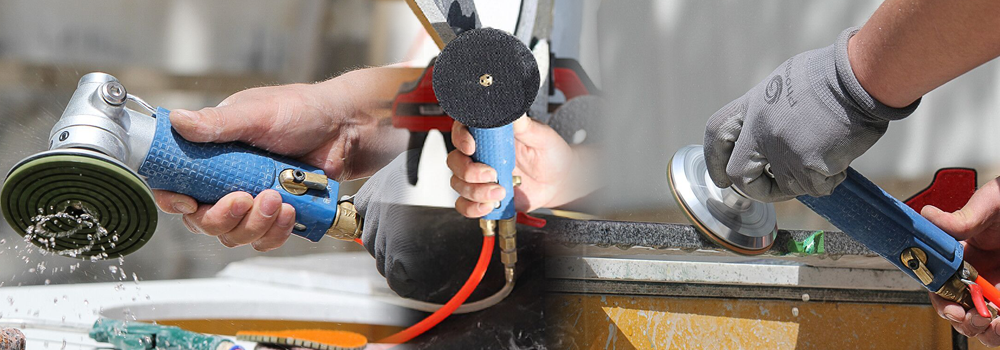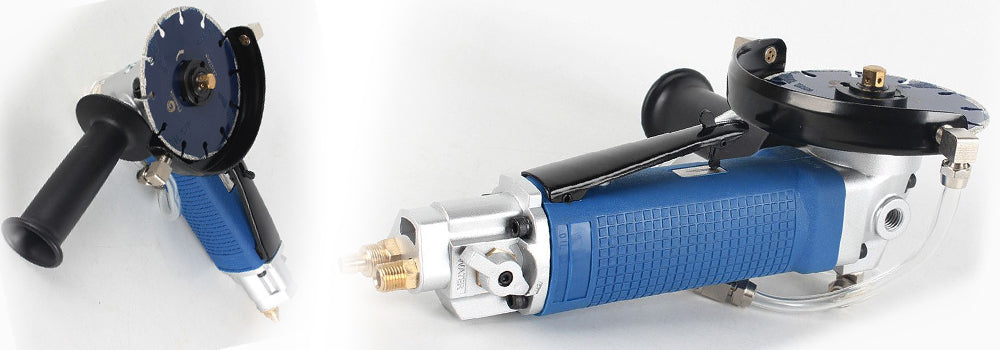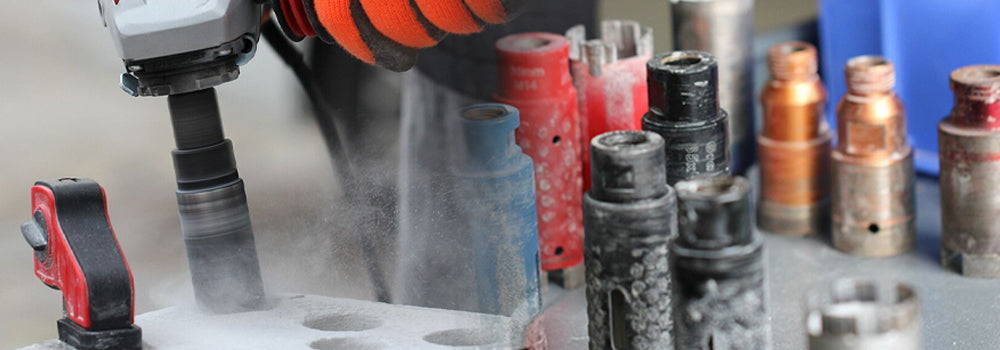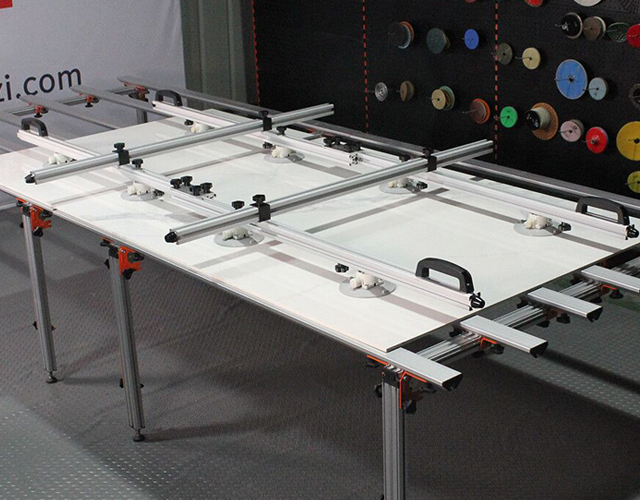
Raizi air wet power tools are driven by the pneumatic system rather than electricity. It basically includes air polishers and air stone cutters, the former is designed for polishing and grinding on stone material surfaces and edges with the attachment of various pads and the latter cutting stones in combination with diamond saw blades. All these products have two threads for connection, M14 and 5/8”-11, and require water engagement during processing, but they do vary in other parameters like RPM maximum and air pressure, so please remember to reaffirm them before placing the orders. Plus, the wet application is more recommended to absorb and reduce the possible dust generated during processing and protect your health.
1 air wet polisher
These machines are ideal for polishing and grinding various stones like granite, marble, quartz, engineered stone, etc., light in weight and handy enough for the daily use of DIY-ers and stone fabrication professionals.
The air polishers vary mostly in the acceptable range of pads size, from 2 inchs to 5 inchs in diameter; they consume around 0.45 cubic meters per minute, or 16 CFM, with the air pressure ranging from 60 PSI to 90 PSI.
2 air wet cutter
Raizi air wet stone cutter, or pneumatic wet saw for stone, is used in combination with diamond saw blades to wet cut different kinds of stone materials, like granite, marble, quartz, engineered stone, etc. (mainly depends on which kind of material the blade is recommended to handle)
Like the air wet polisher, this tool is recommended to use wet to reduce chippings; it also has two kinds of threads. And its maximum RPM is 1000, with the air pressure and air consumption parameters being 90 PSI and 15 CFM respectively.
P.S. one important figure about air tools is the exhaust pipe, which is either on the side of them or at the rear. Technically in large-scale machines, there would be a slight performance loss with a rear exhaust engine as compared to the side exhaust engine, since the gases have to make a sharp turn to go out of the rear exhaust while they can go straight through the front one. But this case does not often apply to our small manual tools. In fact, people are more inclined to have small machines with a rear exhaust because it can spare them from inhaling chippings or grinding grits blown up to their face like the front exhaust always forces them to.
OK, that’s all about this blog. I hope this short essay can be of some help to you.
Raizi Tool: goog tools, easy work~







Leave a comment
This site is protected by hCaptcha and the hCaptcha Privacy Policy and Terms of Service apply.